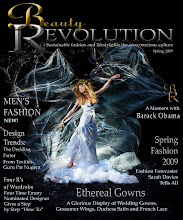Compact fluorescent light (CFL) bulbs need special handling!
If you are like me, you use several CFL throughout your home. They use up to 75 percent less energy that incandescent bulbs, last ten times longer, and are an effortless way to help the environment. But did you know that CFL bulbs contain a very small amount of mercury? The amount of mercury in each bulb is very small but there is still a risk of contamination to the environment if a large number of bulbs break while in landfills. Recycling your old CFL bulbs is the best approach. The metal, glass and mercury is broken down into powder and reused in other products.
What is a CFL bulb breaks? There are certain precautions that should be taken in handling the debris from a broken CFL bulb. The Environmental Protection Agency (EPA) offers the following instructions for dealing with broken CFL bulbs:
If a fluorescent bulb breaks on a hard surface:
• Open a window and leave the room for 15 minutes or more
• Use disposable rubber gloves, if available. Do not touch the debris with bare hands. Carefully scoop up the fragments and powder with stiff paper/cardboard and place them in a sealed plastic bag.
• Wipe area clean with damp paper towels or disposable wet wipes and place in plastic bag. Do not use a vacuum or broom to clean up the broken bulb.
• Place all cleanup materials in a second sealed plastic bag. Place first bag in a second sealed plastic bag and bring to a local recycling location.
• Wash hands after disposing of bag.
If a fluorescent bulb breaks on a rug:
• Remove all materials you can without using a vacuum cleaner. Sticky tape (duct tape) can be used to pick up small pieces and powder.
• If vacuuming is still needed, vacuum the area where the bulb was broken, remove vacuum bag (or empty and wipe the canister) and put the bag or vacuum debris in two sealed plastic bags in the trash for normal disposal.
Sources: Puget Sound Energy, PSE.com
Saturday, February 21, 2009
Subscribe to:
Comments (Atom)



